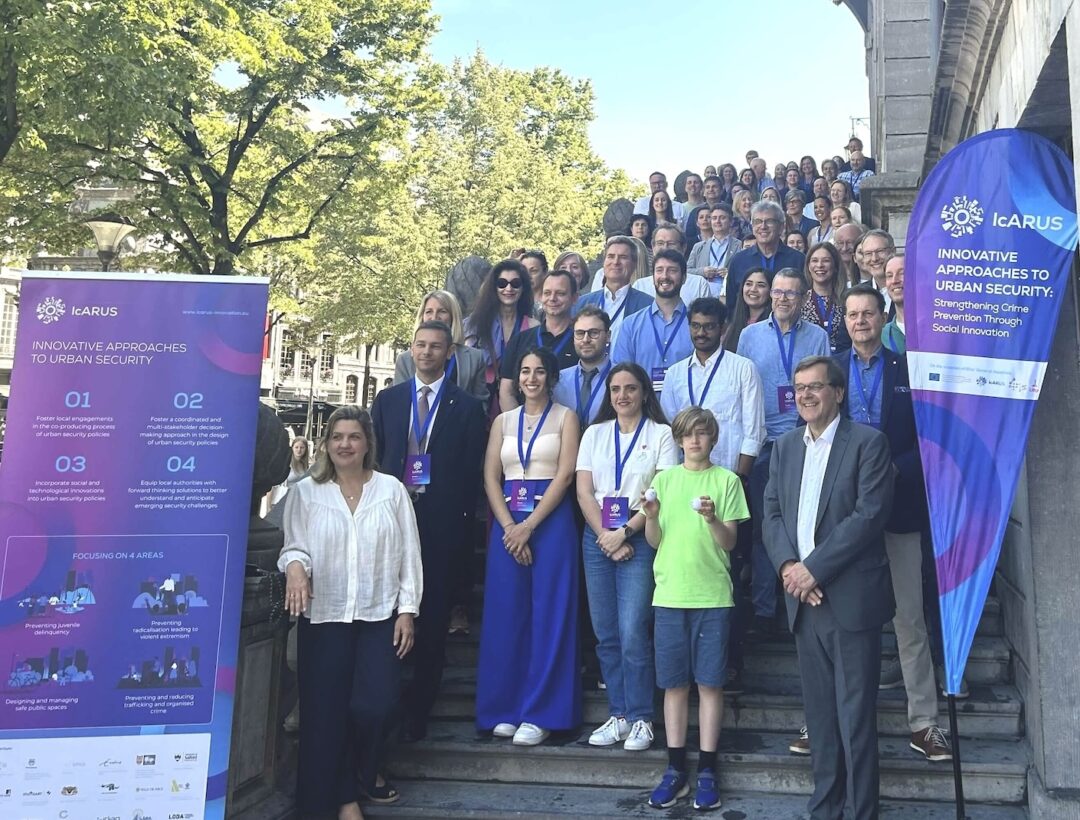
Augsburg, Germany, June 2019 – The new working group on Innovation & Security established in the wake of the Medi@4sec projet on the use of information technologies met on the occasion of Efus’ General Assembly meeting, on 26 June in Augsburg (Germany). Some 15 participants representing local authorities from various European countries discussed the use of technological/social networks to improve public security, policing and crime prevention during a session that was presided by Elizabeth Johnston and whose rapporteur was Paul Ekblom, Visiting Professor in Security and Crime Science at University College de Londres (UCL).
>> What is the scope of innovation?
Many participants observed that some public officials are wary of new technologies, which they consider as a risk and not necessarily an opportunity. It is necessary to overcome such reluctance and to “face the challenge of thinking prospectively, because too many tools and working practices focus on the past and present – and the two things we know for certain about the future are that it will be very different from today, and that these differences will be more complex and emerge ever faster,” said Paul Ekblom.
The discussion then turned to the question of innovation as such: what type of innovation are we talking about in public policies, and in particular in security policies? Is it merely technological innovation, such as apps and add-ons, or should the scope of innovation be wider and cover social interventions and processes?
The second option is more relevant in Efus’ domain because innovation is a cross-cutting matter that applies to all the security issues on which Efus and its members are working.
>> About 15 topics
Following a presentation by Paul Ekblom of his work on crime prevention and technology at University College de Londres, the discussion focused on some 15 topics, such as artificial intelligence, drones, policing apps and fake news.
Here is a short summary of the debates, which were rich and lively. Paul Ekblom has prepared a comprehensive report, which is available here.
- Artificial Intelligence/Machine Learning (AI). How far will this be a game changer in delivering security and justice?
- Vulnerability of ICT to criminals and accidental failures. A recent example was presented of the shutdown for several hours of the national emergency 112 number in the UK (https://www.bbc.co.uk/news/world-europe-48753095).
- Intelligent customers. There was general concern that security/justice practitioners were poorly equipped to enter dialogue with suppliers of new technologies – to judge the need for their products/services, and the appropriateness, costs and benefits of what they were offering.
- Embedding security in the wider society. In Belgium, an ‘escape-room’ Virtual Reality experience was developed for use in hospitals to help drunk drivers reflect on their impact on themselves and other people.
- Surveillance and reporting of incidents. In Riga, Latvia, the wave of innovation centring on CCTV has been supplanted by one based on apps and gadgets. But apps for reporting problems/incidents can have downsides, e.g. misused in disputes between neighbours.
- Managing/regulating drones. In Riga, apps are available for users to see protected areas on a map, where they may not fly a drone (but is there the risk of criminals/terrorists misusing this information to look for sensitive sites?).
- Positive climate-setting for security. In Latvia, police are using social media to show their successes – e.g. videos of arrests, suitably obscuring faces for justice/privacy purposes.
- Combating fake news. In Brussels, experience with police bodycams and live-streaming from police cars was found to be useful to counter fake news.





